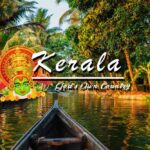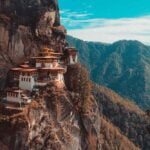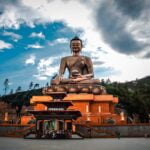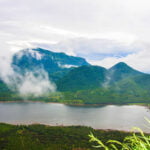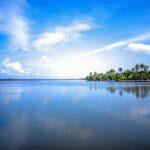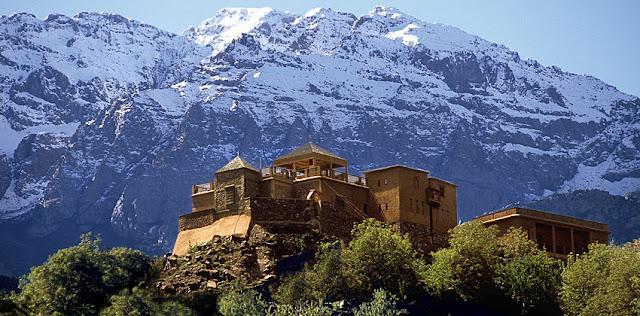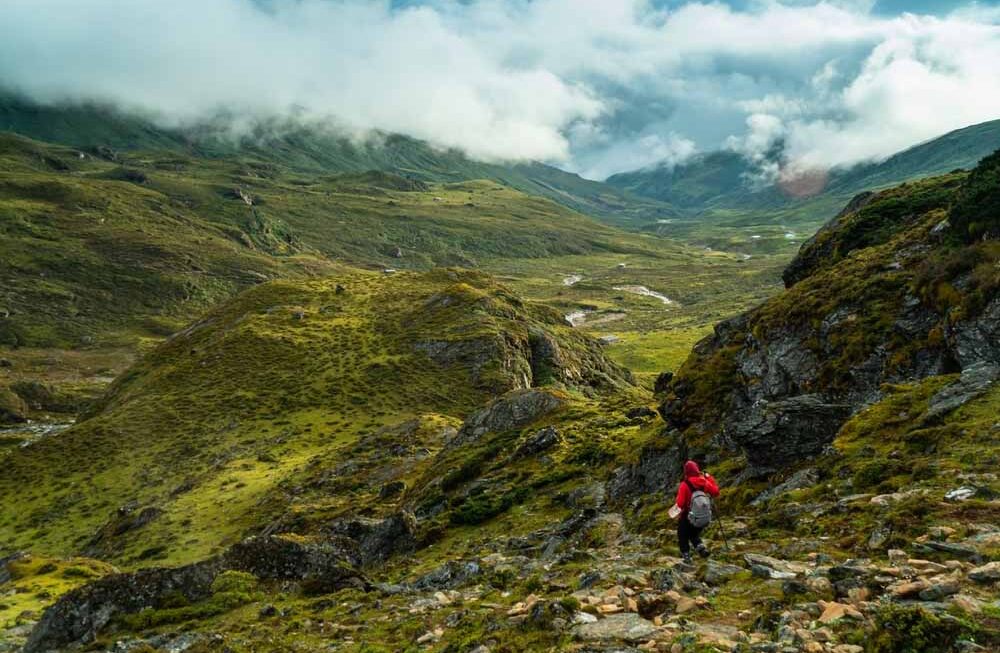Are you prepared to go on an enthralling voyage to the Land of Enchantment? Consider Morocco, a country that seamlessly weaves a rich tapestry of history, culture, and natural beauty. Morocco provides a diverse range of experiences, from the beautiful Atlas Mountains to the spectacular Sahara Desert, and from bustling metropolises to peaceful beach towns. We will delve into the bustling towns, breathtaking landscapes, tantalizing cuisine, traditional arts and crafts, and practical recommendations to help you make the most of your Moroccan vacation.
Outline of the Article
Introduction: Discover the allure of Morocco
Morocco, located in the northwest corner of Africa, is a mesmerizing place that has long enchanted travelers with its exotic allure. This country, steeped in history and influenced by a fusion of Berber, Arab, and European civilizations, provides an enthralling blend of old-world elegance and modern vibrancy. Morocco provides an amazing experience, whether you’re strolling through the busy souks of Marrakech, marveling at the beautiful tilework of medieval palaces, or drinking mint tea in a traditional riad.
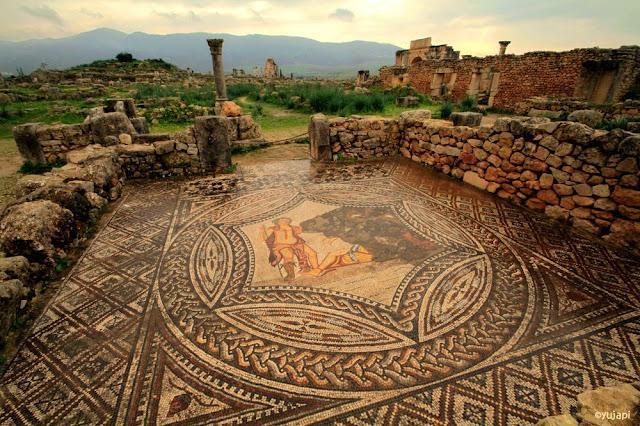
Geographical Overview: From the Atlas Mountains to the Sahara Desert
Morocco’s terrain is as varied as its culture. The Atlantic and Mediterranean seas bound the country, and its shoreline ranges from sandy beaches to rocky cliffs. The spectacular Atlas Mountains, with their snow-capped peaks and lush valleys, dominate the scene inland. And no trip to Morocco is complete without a trip to the Sahara Desert, where limitless dunes stretch as far as the eye can see.
Getting There: How to Reach Morocco
Morocco’s travel is pretty simple, with various options for getting to this fascinating nation.
International Flights to Major Cities
Morocco has many international airports, notably Casablanca Mohammed V International Airport and Marrakech Menara Airport, which serve significant cities across the world. Direct flights are accessible from a variety of European, North American, African, and Middle Eastern countries. When traveling from afar, flying is frequently the most convenient alternative.
Traveling by Land: Border Crossings and Ferries
Those traveling from neighboring nations can access Morocco by land. There are land border crossings with Algeria, as well as the Spanish enclaves of Ceuta and Melilla in North Africa. Furthermore, ships run between Spain and Morocco, giving a scenic and delightful way to travel, particularly for travelers from Europe.
Domestic Transportation by Train and Bus
Domestic transport in Morocco is well-developed, making it simple to travel inside the country. The ONCF, Morocco’s national railway, connects important towns such as Casablanca, Marrakech, Fes, and Tangier. Buses and shared taxis are also popular ways of transportation for reaching smaller towns and isolated places.
Requirements for Visas: Entry Regulations
It is critical to check the visa requirements for your nationality before traveling to Morocco. Citizens of numerous countries, including the United States, Canada, and the European Union, can enter Morocco visa-free for a limited time for tourism purposes.
Best Time to Visit Morocco: Finding the Perfect Season
When planning a vacation to Morocco, consider the optimal time to visit based on your preferences and the types of experiences you want to have.
Spring (March-May): Pleasant weather and blooming landscapes
The weather in Morocco is often moderate and pleasant throughout the spring season. As flowers blossom, the landscapes come alive with brilliant colors, and the countryside is at its most gorgeous. It’s an excellent time to go hiking in the Atlas Mountains or visit the seaside areas.
Summer Festivals (June to August): Hot and Vibrant
Summer temperatures in Morocco are higher, especially in the desert regions. While it can be heated throughout the day, evenings are usually cooler. This season is ideal for beachgoers and water sports aficionados, with coastal cities like Essaouira providing exceptional windsurfing conditions. Summer is also a time for exciting festivals and cultural events, such as the Fes’ Festival of World Sacred Music.
Autumn (September to November): Pleasant Weather and Cultural Events
Autumn is another wonderful time to visit Morocco, with mild weather and fewer tourists than in the summer. It’s a great opportunity to visit historic cities and learn about Moroccan culture. Autumn is also harvest season, and you may be able to take part in local celebrations and festivals, such as the Date Festival in Erfoud.
Winter (December to February): Cooler weather and desert exploration
Winter in Morocco provides colder temperatures, especially at night in the high regions and the desert. The temperature is often pleasant during the day, making it ideal for outdoor activities such as trekking in the Atlas Mountains. The winter months also provide an exceptional opportunity to enjoy the splendor of the Sahara Desert without the strong heat. However, bring thick clothing because temperatures can drop dramatically, especially in the evenings.
Rich Cultural Heritage: A melting pot of traditions and influences
Morocco’s cultural heritage reflects its rich history and the meeting of numerous civilizations. The indigenous Berber people, Arab conquerors, and European colonizers all had an impact on the area, resulting in a distinctive blend of cultures, traditions, and architecture. Morocco’s cultural tapestry is a sight to behold, from the delicate mosaics of Islamic art to the brilliant colors of Berber textiles.
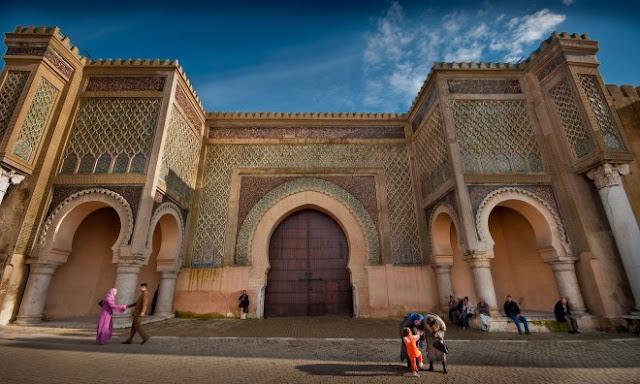
Vibrant Cities: Exploring the Wonders of Marrakech, Fez, and Casablanca
Morocco does not disappoint when it comes to bustling cities. Marrakech, Fez, and Casablanca, in particular, stand out for their rich history, architectural wonders, and lively atmospheres.
Marrakech, the Red City
Marrakech, also known as the “Red City” because of the vibrant color of its architecture, is a sensory delight. The busy Jemaa el-Fnaa square, where snake charmers, street entertainers, and food booths create a vibrant environment, is the city’s beating heart. Explore the intricate lanes of the medina, the magnificent Bahia Palace, and the lovely Majorelle Garden.
Fez: A Time Travel Journey
Fez, Morocco’s oldest imperial city, is a UNESCO World Heritage site that provides a look into the country’s medieval past. Step inside the expansive medina, a maze-like labyrinth of narrow lanes, to find Al-Qarawiyyin, the world’s oldest university. Admire the beautiful architecture of the Bou Inania Madrasa and immerse yourself in the tanneries’ colorful atmosphere.
Casablanca: A modern metropolis
Casablanca, Morocco’s capital, is a thriving metropolis recognized for its modern architecture and busy nightlife. Visit the magnificent Hassan II Mosque, which features beautiful craftsmanship and breathtaking ocean views. Discover the cosmopolitan ambiance of this dynamic city by exploring the bustling Corniche, a seaside promenade packed with cafes and restaurants.
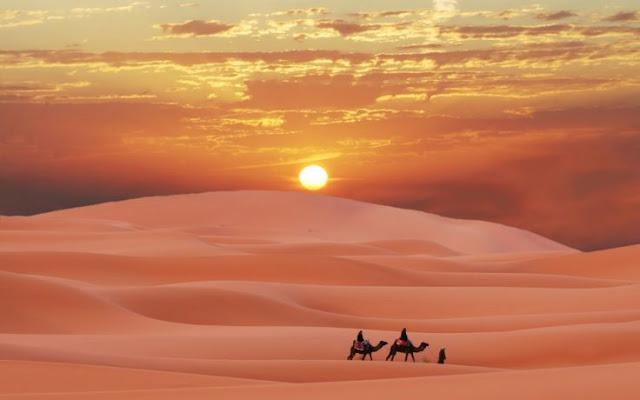
Enchanting Landscapes: From coastal beauty to desert wonders
Morocco’s landscapes are as varied as they are beautiful. This country has it all, whether you’re looking for mountain adventures, beach retreats, or the awe-inspiring beauty of the desert.
The Atlas Mountains: Magnificent peaks and stunning views
Morocco’s Atlas Mountains are a playground for outdoor enthusiasts and nature lovers. Trek to Mount Toubkal, North Africa’s highest mountain, or discover the scenic Ourika Valley, complete with cascading waterfalls and ancient Berber towns. The Atlas Mountains provide an amazing setting for extraordinary activities.
Sahara Desert: A mesmerizing sea of sand
A journey to Morocco isn’t complete unless you visit the Sahara Desert. Spend a night under the stars in a typical desert camp, experience the thrill of dune bashing, and see the desert’s ever-changing colors at sunrise and sunset. The Sahara is a really memorable experience, whether you opt to ride a camel across the dunes or simply take in the tranquility of the immense desert landscape.
Atlantic Coast: Coastal charm and tranquil beaches
Morocco’s Atlantic Coast provides a pleasant break from the country’s bustling towns and desert scenery. Visit Essaouira, a lovely town famed for its stunning medina, active cultural scene, and outstanding windsurfing conditions. Relax on Agadir’s gorgeous beaches or explore the coastal cliffs and hidden coves of Asilah, a picturesque village. The Atlantic Coast offers the ideal balance of relaxation and action.
Moroccan Cuisine: A culinary adventure for the Senses
Morocco’s cuisine is a tantalizing combination of flavors and spices that will satisfy even the most discriminating foodie. Every meal is a feast for the senses, from savory tagines to fragrant couscous.
Tagine: A mouthwatering Moroccan specialty
The tagline is possibly the most famous dish in Moroccan cuisine. Traditionally, this slow-cooked stew is composed of soft meat or vegetables and a blend of aromatic spices including cumin, coriander, and cinnamon. As a result, the meal is full of flavor and delicate to the bite. Don’t forget to pair it with some warm Moroccan bread.
Mint Tea: The classic hospitality beverage
Morocco is recognized for its hospitality, and every trip to the country is complete with a cup of refreshing mint tea. This sweet and aromatic tea, served in small glasses, is a symbol of Moroccan hospitality. Relax and soak in the bright ambiance while the flavors of fresh mint and green tea energize your senses.
Street Food Delights: Savoury delights around every corner
Morocco’s street food culture is a culinary treat. From scorching skewers of grilled meat known as brochettes to the fluffy and delicious Moroccan pancakes known as semen, the streets are teeming with delectable delicacies. Don’t miss out on harira, a substantial and aromatic soup popular during Ramadan, or delightful pastries like chebakia and almond-filled briouats.
Traditional Arts and Crafts: Moroccan craftsmanship at its finest
Morocco is famous for its superb craftsmanship, and each visitor should spend time examining the ancient arts and crafts.
Moroccan Carpets: Handcrafted Treasures
Moroccan carpets are famous around the world for their intricate designs and brilliant colors. From the geometric patterns of the Beni Ourain rugs to the elaborately detailed themes of the Zemmour carpets, each region of the country has its own particular style. Visit a carpet cooperative to learn about traditional weaving processes and perhaps purchase a one-of-a-kind piece to take home.
Pottery & ceramics: Bright colors and intricate designs
Moroccan ceramics and pottery are a true monument to the country’s artistic legacy. The artistry is absolutely impressive, from the delicate geometric designs of Fes pottery to the brilliant blue colors of the famous blue city of Chefchaouen. Explore the pottery workshops and souks to see the craftspeople at work and find exquisite ceramics for your house.
Leather Goods: Treasured Keepsakes
Morocco is also well-known for its fine leather items. Visit Fez or Marrakech tanneries to see the ancient process of processing raw skins into soft and flexible leather. There are numerous alternatives available, ranging from handcrafted leather purses and shoes to beautifully carved belts and wallets. Leather items make great one-of-a-kind and long-lasting keepsakes.
Festivals and Celebrations: Embrace the lively spirit of Morocco
Morocco is a country that loves to celebrate, and you may immerse yourself in the colorful atmosphere of many festivals and events throughout the year.
Ramadan: Experience the commitment and customs
Ramadan is a significant religious occasion in Morocco, and it provides a unique opportunity to witness the Muslim community’s commitment and traditions. Ramadan is a time of meditation, spirituality, and community, from the sounds of the call to prayer ringing through the cities to the colorful night markets serving excellent cuisine for Iftar.
Marrakech International Film Festival: A Star-Studded Event
The Marrakech International Film Festival will thrill film fans. This important festival, held each year, attracts world-renowned filmmakers and actors. Experience the grandeur of the red carpet, attend international film screenings, and immerse yourself in Morocco’s vibrant cinematic culture.
Gnaoua World Music Festival: A Musical Celebration
The Gnaoua World Music Festival, which takes place in the coastal town of Essaouira, is a celebration of traditional Gnaoua music as well as a synthesis of foreign sounds. Immerse yourself in the mesmerizing rhythms and melodies created by artists from Morocco and beyond.
You May also Love to Read:
Peru Travel Guide: Uncover 6 Hidden Wonders of South America
Adventure and Outdoor Activities: Thrilling experiences for every adventurer
Morocco has a wide choice of possibilities for individuals looking for adventure and outdoor sports to suit all levels of thrill-seekers.
Atlas Mountains Trekking: Conquer the Peaks
The Atlas Mountains are a hiker’s dream, with a network of paths offering breathtaking vistas and tough terrain. Embark on a multi-day climb to Mount Toubkal’s top, or opt for shorter excursions through picturesque valleys and Berber communities. The scenery is spectacular, and the sense of accomplishment that comes with reaching a mountain is unsurpassed.
Sahara Camel Riding: Discover the desert like a nomad
Climb a camel and experience the Sahara Desert like a nomad. Allow the smooth sway of the camel to convey you across the mesmerizing dunes as you take in the grandeur of the desert. Spend the night in a typical desert camp, where you can have a great Moroccan feast while listening to the rhythmic beats of traditional music under a starry sky.
Windsurfing in Essaouira: Ride the Atlantic waves
Essaouira is famed not just for its picturesque medina, but also for its exceptional windsurfing conditions. Strong winds and favorable waves make Essaouira a favorite destination for water sports aficionados, whether you’re a beginner or an experienced windsurfer. Ride the waves while admiring the breathtaking vistas of the Atlantic coastline.

Camping: Sleeping under the Moroccan stars
Camping in Morocco is an excellent way to experience the country’s natural splendor. Whether you choose to camp in the Atlas Mountains, along the Atlantic Coast, or in the Sahara Desert, sleeping beneath the stars in Morocco is an unforgettable experience. Set up your tent, start a fire, and enjoy the serenity of your surroundings. From the luxury of your campground, you may wake up to the calm sounds of nature and witness stunning sunrises and sunsets. Camping in Morocco provides an unparalleled sensation of tranquility and connection with the outdoors.
Note: To ensure the preservation of natural landscapes and wildlife, adhere to good camping practices and respect local legislation.
Hospitality and Riads: Experiencing the warmth of Moroccan hospitality
Morocco is known for its great hospitality, and staying in a traditional riad is one of the best ways to experience it. These magnificent and serene guesthouses are frequently tucked away in the heart of the medinas, providing an oasis of tranquility in the midst of bustling towns. As you immerse yourself in the local culture, enjoy personalized service, gorgeous buildings, and the warm smiles of the welcome employees.
Conclusion
Morocco truly is a realm of enchantment, where ancient traditions coexist peacefully with modern vigor. This country offers a sensory adventure unlike any other, from the bustling souks and vibrant towns to the magnificent landscapes and culinary delights. Explore Morocco’s rich cultural heritage, bask in the warmth of Moroccan hospitality, and make memories that last a lifetime. Discover Morocco’s beauty and allow yourself to be enchanted by its allure.
FAQs
Q1. Is Morocco a safe country to visit?
A. Morocco is usually regarded as a safe destination for travelers. However, conventional safety precautions, such as being alert to your surroundings, avoiding secluded areas at night, and utilizing reliable transportation and lodging, are always recommended.
Q2. What is the best time to visit Morocco?
A. Morocco is best visited in the spring (March to May) and fall (September to November), when the weather is mild and pleasant. Summers in the desert can be extremely hot, while winters in the highlands can be extremely cold.
Q3. Do I need a visa to visit Morocco?
A. Many nations, including the United States, Canada, and the European Union, do not require a visa for tourists to enter Morocco. However, before traveling, please check the visa requirements for your specific country.
Q4. What currency is used in Morocco?
A. Morocco’s currency is the Moroccan dirham (MAD). It is advised to exchange some money or withdraw cash from ATMs upon arrival, as credit cards may not be accepted in all locations.
Q5. What are some must-try Moroccan dishes?
A. Tagine (a slow-cooked stew), couscous (a semolina-based dish commonly eaten with meat and vegetables), and pastilla (a savory pastry stuffed with meat, generally pigeon or chicken) are among must-try Moroccan delicacies. Don’t forget to sip some refreshing mint tea!
